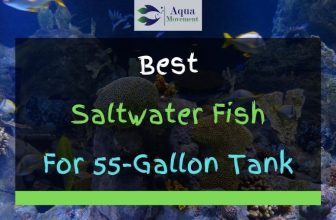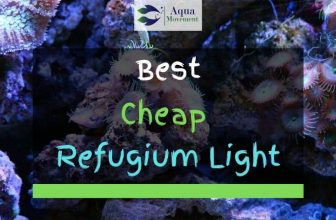The Ideal Reef Tank Temperature Range
Most aquarists, who have reef tanks, are aware of the fact that maintaining an ideal temperature range in their aquarium is very important. This is essential for the proper growth and health of the beautiful corals. If the temperature is excessively high or way too low then the zooxanthellae algae will come out of the polyps or will die. These algae are very important for the survival of the corals.
If the algae leave your corals, the coral’s white calcium carbonate base is exposed. This is also known as coral bleaching. Bleaching increases the chances of stunted growth, diseases, and has an impact on the reproduction of the corals. Severe bleaching can also take their lives.
If you do not want to invite any such issues then you have to maintain a proper reef tank temperature range always. This can be a little tricky for beginners but do not worry we are here to guide you.
Table of Contents
Deciding the Right Reef Tank Temperature
The local fish stores usually keep their aquariums at 75 – 78 degrees Fahrenheit. This is also what they will recommend you to follow. Many coral shippers will suggest maintaining a temperature of 82 degrees Fahrenheit.
It is good to have suggestions but having so many will leave you confused. You will be wondering what actually will be the best temperature. A good way to make the right decision will be to consider the temperatures that the corals were in when in the wild.
You will see that most coral reefs are present in those areas where the temperature of water ranges between 80- and 89-degrees Fahrenheit. They are also present in the Red Sea where the temperature is in the lower 90’s.
Learn About the Origins of the Reefs
The Red Sea, Caribbean, and the Indo-Pacific are places from where the maximum corals for the aquarium trade are acquired. What you can do is ask the coral shippers or the local fish stores from where the corals were shipped.
Usually, the corals are shipped from the Caribbean and the Indo-Pacific and the water temperatures here range between 85- and 89-degrees Fahrenheit. Since you are aware of the temperature you need not worry as long as your reef tank temperature range never goes beyond this level.
The Risks of High Temperature
Fish, invertebrates, and algae are all cold-blooded and cannot keep control of their internal body temperature. It is the temperature of the water that regulates their metabolic rate.
When the water temperature increases the fishes will require more oxygen and food. Algae will consume more nutrients and carbon dioxide. The growth rate of the corals will also increase and they will use even more calcium. Since there will be an increase in growth and feeding, more waste products like ammonia will be released.
As the water gets warmer, it cannot hold as much oxygen as is needed by the fish and the invertebrates. This certainly is not an ideal situation. It is important for the water temperature to be stable and not over-heated.
There will be a problem also if the water temperature goes too low or dips frequently below the ideal range. The rise and fall in temperatures will result in a stressful situation.
This can harm the immune system and cause health issues in the fishes and invertebrates. So, it is very important to maintain a stable temperature range through the day and night, with the minimum possible fluctuations.
Conclusion
So, maintaining a proper reef tank temperature range is very important if you want the lives within to be healthy.
Most of the coral reefs have an average temperature of around 82- and 84-degrees Fahrenheit.
Though you may have been suggested by many to keep the reef tank temperature somewhere between 74 to 77 degrees Fahrenheit, this can actually be a bit too cold.
So, you should ideally keep the temperatures somewhere between 75 to 79 degrees Fahrenheit.
Since you need to maintain a constant temperature you can use a heater with a thermostat. After you install the heater you have to set the temperature and ensure the heater is on. The thermostat in the heater will automatically turn it on and off to match your set temperature.
So, you have done your bit. You have chosen the ideal temperature range and with the help of the thermostat, a constant temperature will always be maintained. You can now be sure your fishes will always be happy and healthy and you have absolutely nothing left to worry about.




